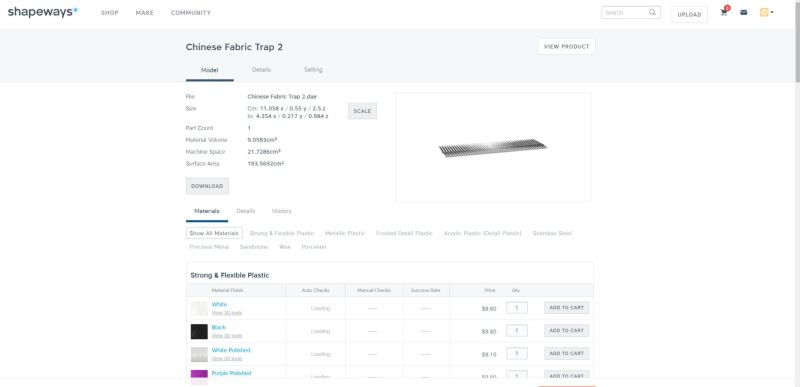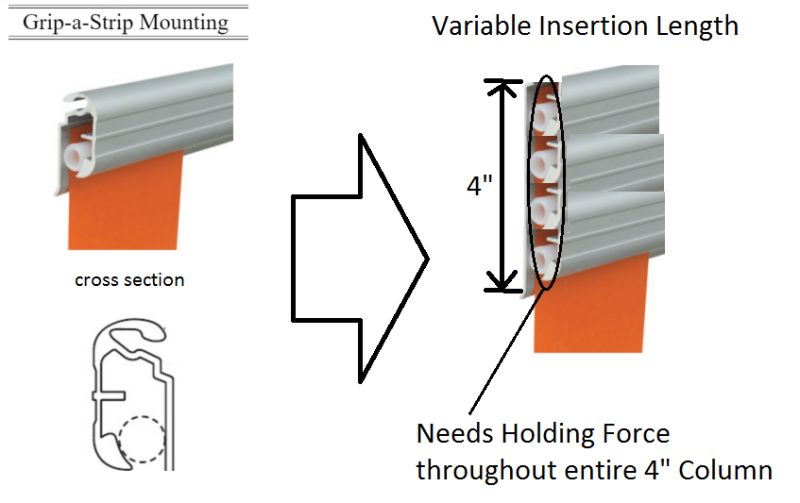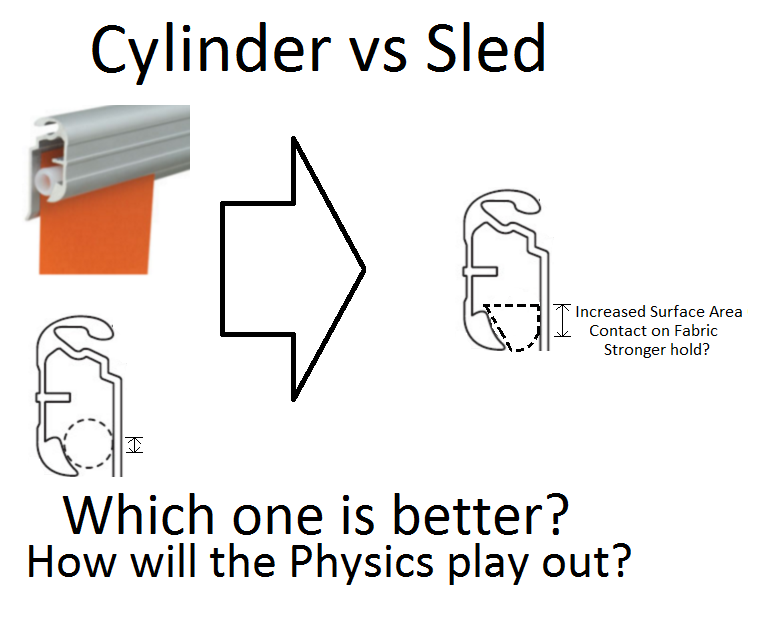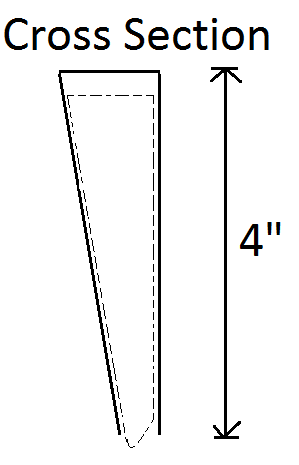DistressedNerd
Electrical
- Dec 11, 2014
- 45
I am trying to find a product or mechanism that already exist that is basically a Chinese finger trap for a sheet of fabric. You feed the fabric into the trap/clamp/mechanism and cant be pulled out. After pondering and asking all the engineers around my office the closest thing we have thought of is a rapid tie down strap like if your securing stuff on your car rack you can pull the strap tighter (easily feeds into the mechanism one direction) but cannot be pulled out in the opposite direction. However, the rapid tie down strap has little backwards pointing or re-curved metal teeth that dig into the material, which is too harsh on the fabric. I need something that accomplishes the same goal that's not so harsh on the fabric - I would love your input on this!
What I eventually thought of was backward pointing or recurved rubber teeth that do not dig into the material but instead use friction and pressure to prevent the fabric from being pulled out. The fabric easily slips in, but when you try to pull it out the friction on the re-curved rubber teeth cause the teeth to "unfold" increasing pressure on the fabric which in turn increases friction. The harder you try to pull the fabric out of the trap the more the re-curved rubber teeth "unfold" > increased pressure > increased friction. How would I ever make this or does something like this already exist or can be modified to build a functional prototype?
Thank you in advance!!!
"Do or do not, there is no try" - Master Yoda
What I eventually thought of was backward pointing or recurved rubber teeth that do not dig into the material but instead use friction and pressure to prevent the fabric from being pulled out. The fabric easily slips in, but when you try to pull it out the friction on the re-curved rubber teeth cause the teeth to "unfold" increasing pressure on the fabric which in turn increases friction. The harder you try to pull the fabric out of the trap the more the re-curved rubber teeth "unfold" > increased pressure > increased friction. How would I ever make this or does something like this already exist or can be modified to build a functional prototype?
Thank you in advance!!!
"Do or do not, there is no try" - Master Yoda





